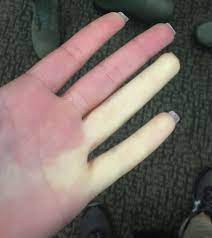Raynaud’s Phenomenon : Genetic Cause

The genetic causes of Raynaud’s phenomenon was recently probed by researchers at Queen Mary University of London’s Precision Healthcare Research Institute (PHURI) and Berlin’s Berlin Institute of Health (BIH).
- Raynaud’s Phenomenon is a condition that causes the blood vessels in the extremities to narrow, restricting blood flow.
- The episodes or “attacks” usually affect the fingers and toes.
- In rare cases, attacks occur in other areas such as the ears or nose.
- An attack usually happens from exposure to cold or emotional stress.
- During a Raynaud’s attack, the arterioles and capillaries in your fingers and toes tighten more than they should.
- This condition is named for the French doctor who first identified it in 1862. You may hear it called by many names. There are two types:
- Primary Raynaud’s(or Raynaud’s disease):
- It happens without any other illness behind it.
- The symptoms are often mild.
- Secondary Raynaud’s (Raynaud’s syndrome, Raynaud’s phenomenon):
- It results from another illness.
- It’s often a condition that attacks your body’s connective tissues, like lupus or rheumatoid arthritis.
- It’s less common, but it’s more likely to cause serious health problems.
- This can include things like skin sores and gangrene. These happen when cells and tissue in your toes and fingers die from lack of blood.
- Primary Raynaud’s(or Raynaud’s disease):




